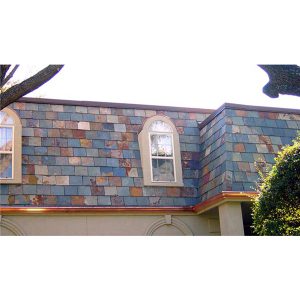Introduction
Colonial cultured stone has been a popular choice for homeowners and builders looking to achieve a classic, elegant look reminiscent of historic colonial architecture. In this comprehensive guide, we will explore the history of colonial cultured stone, the different types available, the installation process, and maintenance tips to keep your stone looking beautiful for years to come.
History of Colonial Cultured Stone
Colonial cultured stone draws inspiration from the traditional building materials used in colonial architecture, particularly the use of natural stone for construction. Colonial architecture, which emerged in the American colonies during the 17th and 18th centuries, was characterized by its simple yet elegant design, featuring symmetrical facades, gable roofs, and often adorned with natural stone accents.
As natural stone was expensive and difficult to transport, early American settlers began to explore alternative materials to achieve the look of stone without the cost and logistical challenges. This led to the development of cultured stone, a man-made alternative that mimics the appearance and texture of natural stone.
The production of cultured stone began in the mid-20th century, with manufacturers perfecting the process of creating lightweight, durable stone veneers that could be easily installed on a variety of surfaces. Colonial cultured stone emerged as a popular choice for homeowners and builders seeking to replicate the timeless appeal of colonial architecture in their own projects.
Types of Colonial Cultured Stone
Colonial cultured stone comes in a variety of styles, colors, and textures, allowing for endless design possibilities. Some of the most popular types of colonial cultured stone include:
1. Fieldstone: Fieldstone cultured stone features a rugged, natural appearance, with irregular shapes and earthy tones that evoke the look of stones found in fields and meadows. This type of cultured stone is often used to create a rustic, country-inspired aesthetic.
2. Limestone: Limestone cultured stone mimics the look of traditional limestone blocks, with a smooth texture and subtle color variations. This type of cultured stone is popular for achieving a classic, elegant look reminiscent of historic colonial buildings.
3. River Rock: River rock cultured stone features smooth, rounded shapes and a range of colors inspired by stones found in riverbeds. This type of cultured stone adds a touch of natural beauty and texture to any exterior or interior space.
4. Cobblestone: Cobblestone cultured stone replicates the look of weathered cobblestones, with their distinctive round shapes and rough textures. This type of cultured stone is often used to create a charming, old-world feel in both residential and commercial settings.
Installation of Colonial Cultured Stone
Installing colonial cultured stone requires careful planning and attention to detail to ensure a professional and long-lasting result. Here are the basic steps involved in the installation process:
1. Surface Preparation: The surface where the cultured stone will be installed must be clean, dry, and free of any debris or contaminants. It is essential to properly prepare the surface to ensure proper adhesion of the cultured stone.
2. Waterproofing and Lathing: A waterproofing membrane is applied to the surface to protect against moisture infiltration. A metal lath is then installed over the waterproofing membrane to provide a secure base for the cultured stone.
3. Mixing Mortar: A high-quality mortar mix is prepared according to the manufacturer's instructions. The mortar should have the right consistency to ensure proper adhesion of the cultured stone.
4. Applying Mortar: Mortar is applied to the back of each cultured stone piece using a trowel. The stone pieces are then pressed firmly into place on the prepared surface, with mortar joints between each piece.
5. Grouting: Once the cultured stone is in place, any gaps or voids between the stones are filled with grout to create a seamless, finished look. The grout is smoothed and shaped to match the texture of the stone.
6. Sealing: A sealer is applied to the finished cultured stone installation to protect against stains, moisture, and UV damage. Wall mosaic tile for vertical surfaces resealing is recommended to maintain the beauty and longevity of the stone.
Maintenance of Colonial Cultured Stone
Proper maintenance is essential to preserve the appearance and integrity of colonial cultured stone. Here are some tips to help you keep your cultured stone looking its best:
1. Regular Cleaning: Periodic cleaning with a mild detergent and water can help remove dirt, grime, and other contaminants that can dull the appearance of the stone. Avoid using harsh chemicals or abrasive cleaners that can damage the stone surface.
2. Inspect for Damage: Regularly inspect your cultured stone for any signs of damage, such as cracks, chips, or loose pieces. Promptly repair any damage to prevent further deterioration and maintain the structural integrity of the installation.
3. Avoid Pressure Washing: While it may be tempting to use a pressure washer to clean your cultured stone, this can actually cause damage by stripping away the mortar and loosening the stone pieces. Stick to gentle cleaning methods to preserve the stone's appearance.

4. Sealant Maintenance: Check the sealant on your cultured stone regularly and reapply as needed to protect against moisture infiltration and UV damage. A well-maintained sealant will prolong the life of your cultured stone and keep it looking like new.
Conclusion
Colonial cultured stone offers a versatile and cost-effective way to achieve the timeless elegance of colonial architecture in modern construction projects. With a wide range of styles, colors, and textures to choose from, colonial cultured stone can complement a variety of architectural styles and design preferences. By following proper installation and maintenance practices, you can enjoy the beauty and durability of colonial cultured stone for years to come.
